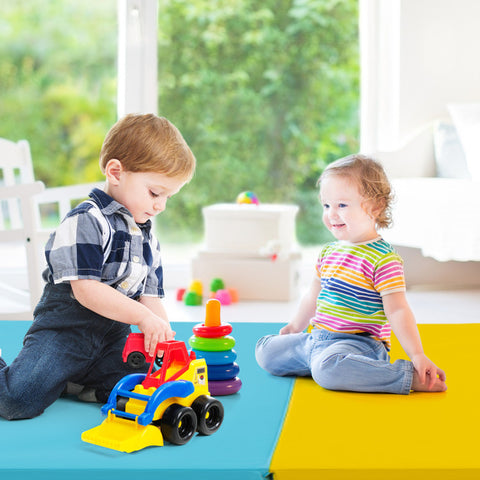News
How to Create a Safe and Effective Gymnastics Practice Area at Home
Creating a safe and effective gymnastics practice area at home is essential for athletes of all ages who want to build skills, strength, and confidence outside of the gym. Whether you're setting up a space for a beginner or a seasoned gymnast, the right home setup helps prevent injuries and supports consistent training. In this guide, we’ll cover everything you need to know about how to create a safe and effective gymnastics practice area at home—from choosing the right gymnastics mats to optimizing space and equipment for safety and performance.

Choosing the right space for home practice
Before buying any gymnastics equipment, identify a safe area in your home that’s large enough for basic movements like rolls, handstands, and cartwheels. Basements, spare rooms, garages, or backyard patios are often ideal. The space should have:
- Enough room for movement without hitting furniture or walls
- A flat, stable floor surface
- Proper lighting and ventilation
Avoid practicing on hard surfaces like tile or hardwood without a protective mat, as these can increase the risk of joint injury and limit mobility.
Importance of high-quality gymnastics mats
Gymnastics mats are one of the most critical parts of a home setup. They offer cushioning, shock absorption, and grip to support various activities such as tumbling, stretching, and balance drills. Look for mats that are:
- Made with high-density foam for support
- Covered in non-slip vinyl for safety
- Easy to clean and fold for storage
Folding panel mats, incline wedge mats, and tumbling tracks are excellent choices for different skill levels and practice types. According to USA Gymnastics guidelines, using proper mats significantly reduces the risk of injury during at-home training.
Essential equipment for a complete home setup
While gymnastics mats form the foundation of your home practice area, additional tools can help build strength and coordination:
- A balance beam (floor-level or adjustable)
- A horizontal bar or pull-up bar (with crash mat underneath)
- Resistance bands for strength training
- Foam blocks or cushions for practicing landings
TIP: Start with just the basics and add equipment gradually based on your gymnast's progress and available space.
Organizing your home practice area for safety
A well-organized space supports both safety and focus. Keep the area clutter-free and dedicate it solely to gymnastics during training sessions. Always supervise children, and enforce clear rules about equipment use.
Here are a few organization tips:
- Store mats vertically when not in use
- Use wall hooks or bins for small equipment
- Lay down anti-slip pads under larger mats if the flooring is smooth
Protecting walls with soft bumpers or padding is another smart step, especially for younger children who are still learning balance and coordination.
Warm-up and cooldown essentials
No gymnastics practice session is complete without a proper warm-up and cooldown. These routines help prevent strains and improve performance:
- Include light cardio (like jumping jacks or jogging in place) before training
- Follow with dynamic stretches that target core, shoulders, hips, and hamstrings
- Cool down with gentle static stretching and deep breathing to relax muscles
TIP: Teach gymnasts to listen to their bodies and stop if they feel pain or fatigue. Recovery is just as important as practice.
Maintaining your gymnastics equipment
To keep your home gymnastics area safe and effective long-term, inspect all mats and equipment regularly. Watch for:
- Ripped vinyl or foam exposure on mats
- Loose bolts or unstable bars/beams
- Dust, dirt, or moisture buildup that affects grip or surface texture
Clean mats with a mild disinfectant, and store gear in a dry location to prevent mold or warping. Replacement parts should be sourced from trusted manufacturers to ensure compatibility and safety.
Why a home practice area is valuable
Setting up a gymnastics area at home allows athletes to practice more frequently, reinforcing skills learned in formal training. It also encourages independence, flexibility, and goal setting. Whether your child is preparing for a meet or simply enjoys movement, a safe space at home can support long-term athletic growth and healthy routines.
Conclusion
Learning how to create a safe and effective gymnastics practice area at home is about combining the right space, equipment, and habits. With proper gymnastics mats, safe flooring, basic gear, and regular maintenance, you can build a home setup that supports progress while minimizing risks. Home practice offers gymnasts the chance to refine technique, build strength, and stay active between classes—all in a comfortable, familiar setting. A little preparation goes a long way in creating a safe and productive training environment for gymnasts of all levels.

